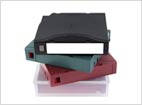There’s clearly a lot of excitement these days about the rise of Flash storage. However, the idea that Flash storage is going to replace magnetic storage entirely is an oversimplification of storage trends in the enterprise. Flash memory is roughly equivalent in pricing to high-end magnetic storage, but there are still massive amounts of data that continue to be stored on slower magnetic drives that cost a lot less than Flash storage.
To make it simpler to navigate the nuances of modern data storage in the enterprise, Scale Computing today announced that it has added solid-state drives (SSDs) and automated tiering software to a hyperconverged platform aimed at the midmarket.
Jason Collier, co-founder and chief evangelist for Scale Computing, says the HC3 system makes use of HyperCore Enhanced Automated Tiering (HEAT) software to simplify the management of data storage on an application workload basis. Rather than manually having to tune the system, IT administrators can employ a slide bar to determine the amount of SSD storage that should be allocated.
Available in four- or eight-drive units, the Scale systems include one 400 or 800GB SSD with three NL-SAS HDD in 1-6TB capacities and memory up to 256GB, or two 400 or 800GB SSD with six NL-SAS HDD in 1-2TB capacities and up to 512 GB memory, respectively. Just as significantly, Collier notes that all open source virtual machines running on the system have direct access to virtual disks, which eliminates all the overhead associated with managing Virtual Storage Appliances (VSA), SAN protocols and file systems.
While interest in hyperconverged systems is high, most of the platforms today are aimed at the higher end of the IT market; most of what is targeted at the midmarket today comes in the form of an appliance. Collier says Scale Computing, in contrast, is delivering a hyperconverged platform that not only scales better, but is simpler to manage. The result, says Collier, is a hyperconverged platform that resembles a traditional minicomputer platform such as the AS/400 that many mid-range IT organizations used to historically run.
How nostalgic IT administrators are for platforms such as the AS/400 remains to be seen. But one thing that is for certain is that most of those IT organizations would prefer to keep the data center as simple as possible.



